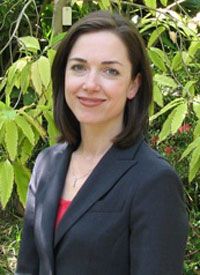Outlook in HER2+ Breast Cancer Much Brighter Today Than 10 Years Ago, Expert Says
Sara Hurvitz, MD, discusses ongoing advances that continue to revolutionize the treatment of patients with HER2+ breast cancer.
Sara A. Hurvitz, MD

Sara A. Hurvitz, MD
Over the last decade, the treatment landscape in HER2-positive breast cancer has changed dramatically, says Sara Hurvitz, MD.
“I believe that a patient diagnosed today has a much greater chance of being alive 5 or 10 years from nowsome of them may even be cured—and that compares very favorably with the outlook of 10 years ago when we just had 1 or 2 therapies and no evidence to support using HER2-targeted therapies after a patient’s disease grew,” Hurvitz said.
In an interview withTargeted Oncology, Hurvitz director of the Hematology/Oncology Breast Cancer Program and an associate professor in the Department of Medicine at the University of California, Los Angeles, discusses ongoing advances that continue to revolutionize the treatment of patients with HER2+ breast cancer.
TARGETED ONCOLOGY:How far have we come in treating HER2-positive metastatic breast cancer?
In terms of the metastatic setting, we have many different treatment options available now for patients. Just 10 years ago, when I started as a breast oncologist out of my fellowship, you had 1 opportunity to treat a patient with HER2-targeted therapy because we had no evidence and there was no approval for us to use trastuzumab (Herceptin) or lapatinib (Tykerb) after a patient’s disease grew on trastuzumab. Nowadays, we not only have trastuzumab that we can use after a patient progresses, but we also have T-DM1, lapatinib, and dual HER2-targeting, as well as data to support us using endocrine therapy and HER2-targeted therapy.
Our treatment in the frontline setting has drastically changed with trastuzumab and pertuzumab with a taxane, with the longest median OS that has been reported in a clinical trial.
I believe that a patient diagnosed today has a much greater chance of being alive 5 or 10 years from now some of them may even be cured—and that compares very favorably with the outlook of 10 years ago when we just had 1 or 2 therapies and no evidence to support using HER2- targeted therapies after a patient’s disease grew.
TARGETED ONCOLOGY:What are the current and emerging neoadjuvant treatment options?
We are using a trastuzumab plus pertuzumab combination routinely for patients who need neoadjuvant therapy. That has become an FDAapproved, NCCN guideline-supported regimen because it gives the highest chance of a pCR.
The regimen I use most commonly is TCHP, which is docetaxel, carboplatin, trastuzumab, and pertuzumab, but there are 2 other regimens available in the United States based on the NeoSphere and TRYPHAENA studies. Those are either fluorouracil, epirubicin, and cyclophosphamide (FEC) for 3 cycles followed by docetaxel, trastuzumab, and pertuzumab (THP) for 3 cycles, or THP times 4 cycles followed by surgery and then FEC after surgery for 3 cycles. That is the standard of care now. It gives patients a very high chance of having a complete eradication of their tumor, somewhere around 50% or higher in the breast and lymph nodes with the use of these therapies. We know that patients who achieve a pCR at the time of surgery have the most effective outcome. They are going to have the lowest chance of having their cancer come back and the most effective OS.
We did the KRISTINE study looking at T-DM1 and pertuzumab compared with the TCHP regimen, hoping that the T-DM1 as a less toxic, more directed therapy would yield a better outcome, and it actually was inferior to standard chemotherapy. The pCR rate was lower for patients getting T-DM1, so it has not changed yet. Then, at the 2016 San Antonio Breast Cancer Symposium, Mothaffar Fahed Rimawi, MD, presented the NSABP B-52 study looking at the TCHP regimen alone or in combination with endocrine therapy in patients with hormone receptor (HR)-positive/HER2-positive breast cancer. The trial showed high rates of pCR but no difference for patients who had endocrine therapy or not.3 Right now, there are a lot of ongoing studies looking at CDK4/6 inhibitors in combination with HER2-targeted therapies and other kinds of interesting combinations, but outside of a clinical trial the standard regimens are the ones I mentioned.
TARGETED ONCOLOGY:What are some of the most common adverse events with these treatments and how do you manage them?